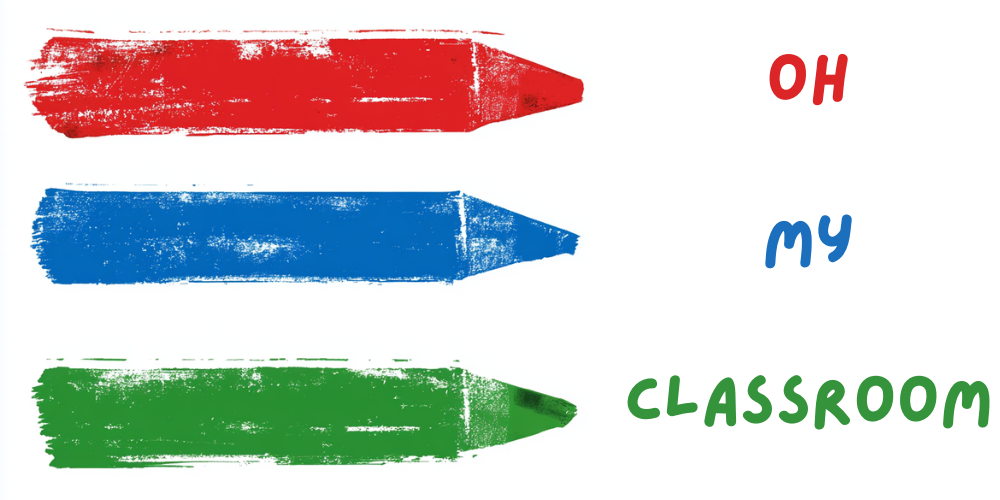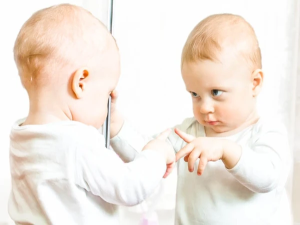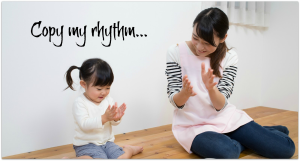Building strong interpersonal skills and enhancing social interactions are crucial for children’s development.
One effective way to cultivate these abilities is through eye contact games, which not only promote better communication but also foster a sense of connection and empathy.
Whether played at home, in school, or during group activities, these fun eye contact games for kids are designed to enhance their ability to engage with others, express themselves confidently, and develop a deeper understanding of nonverbal cues.
“Mirror, Mirror”
In this game, children pair up and face each other. One child becomes the leader, and the other child mirrors their movements and facial expressions. The key is to maintain eye contact throughout the activity. As the leader, the child can make various gestures and expressions, and the mirror partner must imitate them precisely. This game not only encourages eye contact but also promotes empathy and the ability to read and respond to nonverbal cues. It’s a wonderful way for kids to develop a deeper understanding of body language and build a strong connection with their partners.
“Storytelling Stare” –
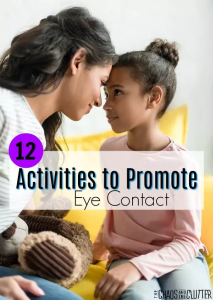
This game sparks children’s creativity while enhancing their eye contact skills. Gather the kids in a circle and begin a story by saying a few sentences. Then, one child continues the story by adding a few more sentences while maintaining eye contact with another participant. The next child takes over, connecting their sentences to the previous ones, and passes the eye contact to a different player. This game not only encourages children to listen attentively but also challenges them to maintain focus and engage with their peers through eye contact, resulting in a collaborative and imaginative storytelling experience.
“Animal Gaze” –
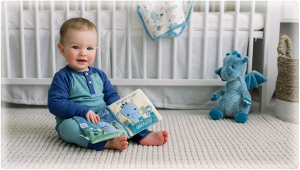
Children love animals, so why not incorporate them into an eye contact game? Gather a collection of animal pictures or use stuffed animals representing various species. Place the pictures or toys in a circle, and each child takes a turn picking one and holding it up. The child then makes eye contact with another participant and imitates the animal’s facial expressions and movements. The other child must guess which animal is being portrayed. This game encourages sustained eye contact, imagination, and the ability to express oneself non-verbally, all while having a blast with animal antics.
Related: 20 Incredible Sensory Bags for Toddlers & Babies
“Catch My Gaze” –
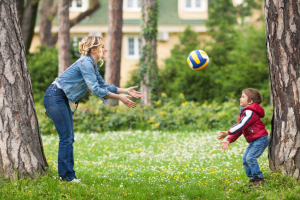
This game is a simple yet effective way to improve children’s ability to catch and maintain eye contact. Divide the kids into pairs and have them stand facing each other at a comfortable distance. One child starts as the catcher, and the other child is the mover. The mover attempts to avoid making eye contact while trying to move around the catcher and touch a designated spot without getting caught by their gaze. The catcher’s goal is to make eye contact with the mover before they reach the spot. This game enhances concentration, agility, and the ability to quickly respond to visual cues.
“Emotion Connection” –

This game helps children understand and interpret emotions while strengthening their eye contact skills. Prepare a deck of emotion cards or write different emotions on separate pieces of paper. Each child takes turns drawing a card or selecting one at random. They then hold up the card, displaying the chosen emotion, and make eye contact with another player. Without speaking, they convey the emotion through their facial expressions and eye contact, while the other child tries to guess the emotion being portrayed.
Related: 20 Best Partner Games for Kids
“Eye Contact Freeze Dance” –
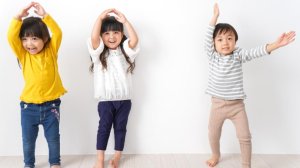
Play some music and have the kids dance freely around the room. When the music stops, they must quickly find a partner and freeze, maintaining eye contact with each other. You can give them specific instructions on how they should freeze, like striking a pose or making a funny face. This game promotes quick thinking, collaboration, and the ability to connect with others through eye contact even in fast-paced situations.
“Eye Spy Nature Walk” –
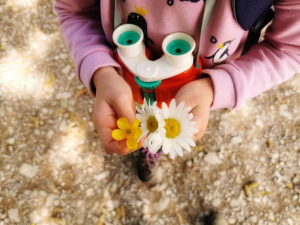
Take the kids on a nature walk, either in a park or a garden. During the walk, ask them to find interesting objects, such as flowers, leaves, or insects. When they spot something fascinating, they must make eye contact with you and silently point to the object without speaking. The others in the group then try to guess what they’ve spotted. This game encourages observation skills, patience, and effective nonverbal communication through eye contact.
“Eye Spy” –
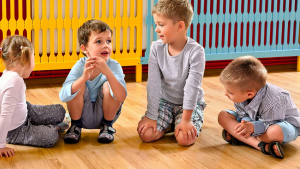
A twist on the classic game, “Eye Spy” challenges children to use their observation and eye contact skills. Choose a child to be the “spy” who silently selects an object in the room. The spy then makes eye contact with another child and begins describing the object using only their eyes. The child who correctly guesses the object becomes the next spy. This game sharpens children’s ability to notice details, communicate visually, and interpret visual cues from their peers.
“Keep the Rhythm” –

This game combines eye contact with rhythm and coordination. Sit the children in a circle and establish a rhythmic pattern by clapping hands, stomping feet, or using a musical instrument. One child starts by making eye contact with another child in the circle and initiates a new movement or rhythm. The child who receives eye contact must then imitate the movement and make eye contact with another player to continue the pattern. The game continues, with each child adding a new movement and maintaining eye contact throughout. This activity promotes teamwork, synchronization, and the ability to communicate through eye contact and coordinated actions.
“Eye Detective” –
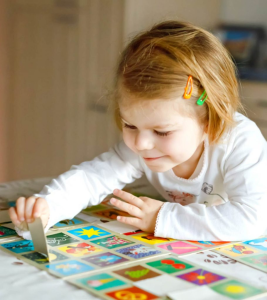
This game encourages children to observe and remember details while honing their eye contact skills. Place a group of objects or pictures on a table and let the children study them for a brief period. Then, cover the objects and ask each child to describe one object to the rest of the group using eye contact to convey the details. The other children must guess which object is being described. This game enhances children’s observation skills, memory recall, and ability to communicate effectively through eye contact and nonverbal cues.
“Expressive Charades” –

This game combines the elements of charades and eye contact to enhance nonverbal communication skills. Write down various emotions or actions on separate slips of paper and place them in a bowl. One child picks a slip and without speaking, uses eye contact and facial expressions to act out the emotion or action for the group to guess. The child should maintain eye contact with the other players while conveying the clue. Games like charades helps children become more adept at expressing themselves nonverbally and reading visual cues.
“Name That Tune” –
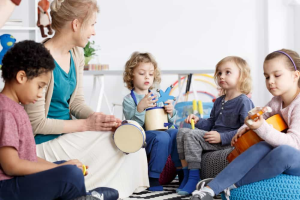
In this musical game, children take turns selecting a favorite song or nursery rhyme. The chosen child must maintain eye contact with the rest of the group while humming or singing a few lines from the song. The other children try to guess the tune. This activity not only sharpens listening skills but also encourages children to engage and connect with others through eye contact and shared enjoyment of music.
“Concentration Challenge” –
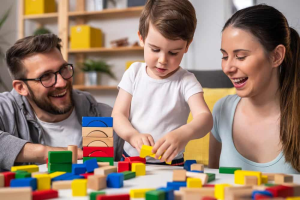
This game is a memory and eye contact challenge rolled into one. Place a collection of small objects on a tray and cover it with a cloth. Gather the children in a circle and reveal the tray for a limited time, allowing them to observe and memorize the objects. Cover the tray again, and each child takes turns making eye contact with another participant and silently mimicking one of the objects they remember from the tray. The other child must correctly identify the mimicked object. This game promotes focus, visual memory, and the ability to communicate without words through eye contact.
“Feel the Beat” –
This rhythm-based game focuses on coordination, concentration, and eye contact. Sit the children in a circle and choose one child to start a beat by clapping hands or tapping a drum. The beat then passes from child to child around the circle, with each child maintaining eye contact with the next player as they continue the rhythm. If a child breaks the rhythm or fails to make eye contact, they are out of the game. The last child remaining becomes the leader for the next round. This game hones children’s ability to synchronize movements, maintain focus, and engage with others through eye contact.
“Puppet Pals” –

This imaginative game allows children to express themselves through puppetry while practicing eye contact. Provide each child with a puppet or stuffed animal. The children pair up and have a conversation using their puppets, making sure to maintain eye contact with their partner’s puppet. They can create a story, ask questions, or simply engage in puppet dialogue. This activity encourages children to use eye contact to establish connections, communicate effectively, and express themselves creatively through their puppet characters.
“The Gaze Challenge” –
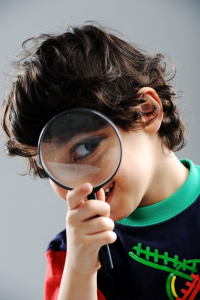
This game is a friendly competition that challenges children to maintain eye contact for as long as possible. Pair up the children and have them sit or stand facing each other. Set a timer and instruct the pairs to maintain eye contact without blinking or looking away. The pair that holds the gaze for the longest time wins the round. This game encourages focus, concentration, and the ability to maintain eye contact even in challenging situations.
“Eye Contact Drawing” –

In this creative game, children take turns being the artist and the observer. Provide each child with a drawing pad and a pen or pencil. The artist begins by making eye contact with the observer and starts drawing on their pad. The observer’s task is to closely watch the artist’s eyes and replicate their eye movements on their own drawing pad without looking at the artist’s hand. After a set time, the roles switch. This activity improves hand-eye coordination, observation skills, and the ability to communicate visually through eye contact.
“Eye Contact Jigsaw” –
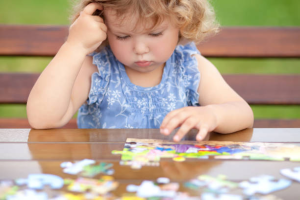
This game challenges children to work together to solve a jigsaw puzzle while maintaining eye contact. Provide each group of children with a jigsaw puzzle and instruct them to complete it. The catch is that each child can only work on the puzzle while making eye contact with another group member. This game fosters teamwork, coordination, and the ability to communicate effectively through eye contact.
“Friendly Staring Contest” –

This game puts a twist on the traditional staring contest by encouraging positive interactions and connection. Divide the children into pairs and have them sit facing each other. Instruct them to maintain eye contact with their partner while smiling. The pair that holds eye contact and smiles genuinely for the longest duration wins the round. This game fosters a friendly and engaging atmosphere, allowing children to develop a sense of connection, empathy, and positive engagement through eye contact.
“Eye Contact Trust Walk” –
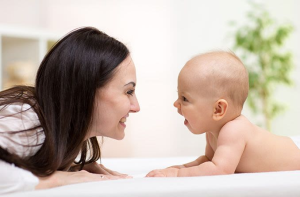
This activity promotes trust and communication through eye contact. Pair up the children and have one child close their eyes while the other becomes their guide. The guide leads their partner through a designated space, giving directions using only eye contact and subtle nonverbal cues. The child with closed eyes must trust their partner and follow their guidance solely through eye contact. After a set distance, the pairs switch roles. This game enhances trust, communication, and the ability to rely on nonverbal cues.
